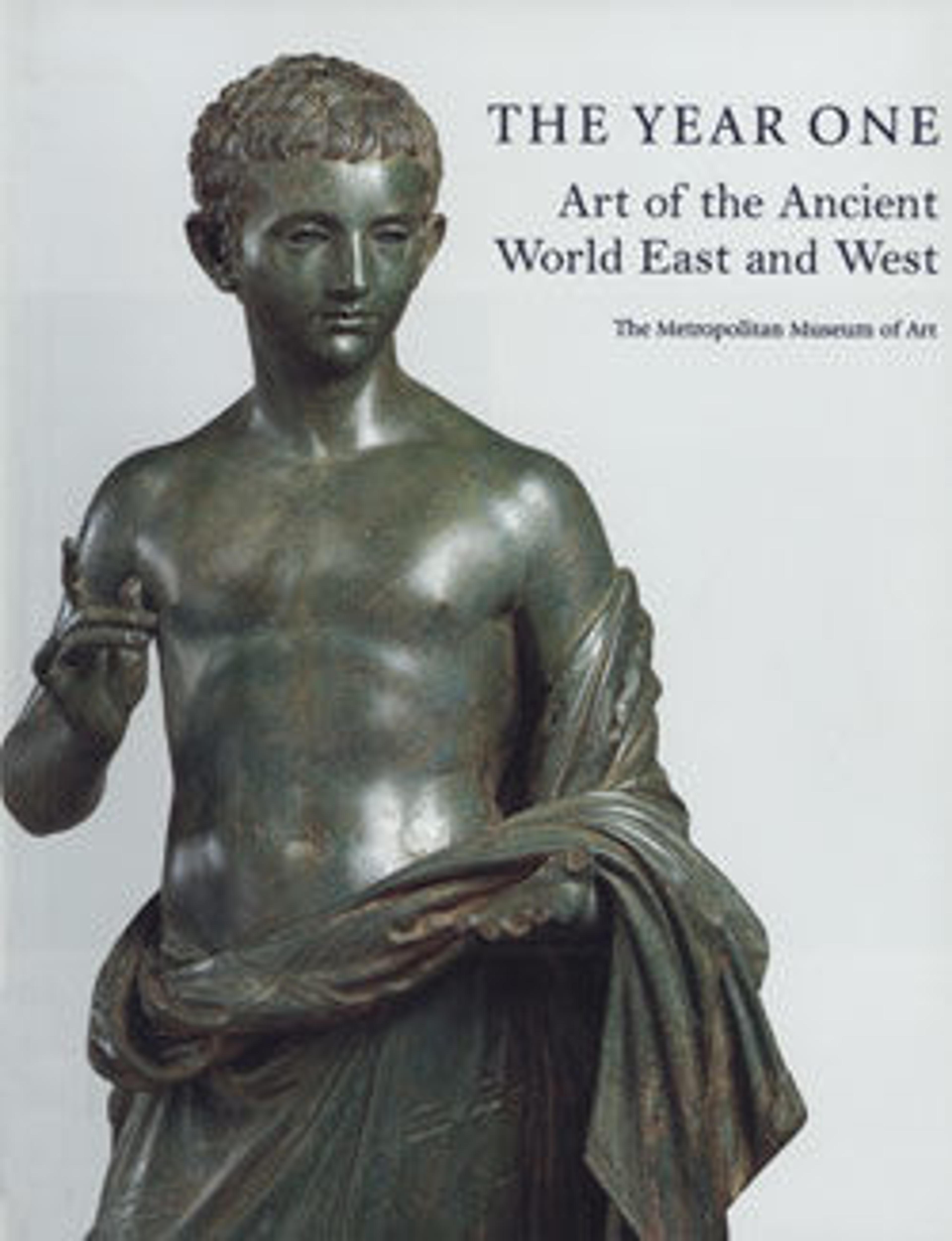Glass dish
Translucent deep emerald green.
Rim folded out and down, forming collar around top of side; shallow side, bulging slightly downwards, and then turned sharply in to pushed-in floor; solid, low outsplayed foot ring; slightly concave bottom.
Complete but cracked around side with small chips missing; pinprick and a few larger bubbles; patches of dulling, pitting, and iridescent weathering.
Deeply colored monochrome glass was very popular in the early Roman blown-glass industry, and it was only after about A.D. 50 that colorless and naturally colored blue-green glass came into widespread use.
Rim folded out and down, forming collar around top of side; shallow side, bulging slightly downwards, and then turned sharply in to pushed-in floor; solid, low outsplayed foot ring; slightly concave bottom.
Complete but cracked around side with small chips missing; pinprick and a few larger bubbles; patches of dulling, pitting, and iridescent weathering.
Deeply colored monochrome glass was very popular in the early Roman blown-glass industry, and it was only after about A.D. 50 that colorless and naturally colored blue-green glass came into widespread use.
Artwork Details
- Title: Glass dish
- Period: Early Imperial
- Date: mid–1st century CE
- Culture: Roman
- Medium: Glass; blown
- Dimensions: H.: 1 7/8 in. (4.8 cm)
Diam.: 7 1/8 in. (18.1 cm) - Classification: Glass
- Credit Line: Gift of Henry G. Marquand, 1881
- Object Number: 81.10.32
- Curatorial Department: Greek and Roman Art
More Artwork
Research Resources
The Met provides unparalleled resources for research and welcomes an international community of students and scholars. The Met's Open Access API is where creators and researchers can connect to the The Met collection. Open Access data and public domain images are available for unrestricted commercial and noncommercial use without permission or fee.
To request images under copyright and other restrictions, please use this Image Request form.
Feedback
We continue to research and examine historical and cultural context for objects in The Met collection. If you have comments or questions about this object record, please contact us using the form below. The Museum looks forward to receiving your comments.
